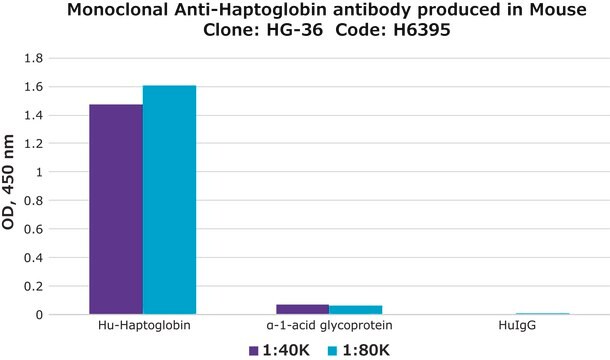SAB4200792
Anti-β-Tubulin IV antibody, Mouse monoclonal
clone ONS.1A6, purified from hybridoma cell culture
Synonim(y):
Anti-TUBB4
About This Item
Polecane produkty
pochodzenie biologiczne
mouse
Poziom jakości
forma przeciwciała
purified from hybridoma cell culture
rodzaj przeciwciała
primary antibodies
klon
ONS.1A6, monoclonal
Postać
buffered aqueous solution
masa cząsteczkowa
~55 kDa
reaktywność gatunkowa
chicken, bovine, rat, mouse, human
metody
ELISA: suitable
immunoblotting: 10-20 μg/mL using human breast cancer MCF7 cell line.
immunofluorescence: 5-10 μg/mL using human foreskin Hs68 cells.
immunohistochemistry: suitable
numer dostępu UniProt
Warunki transportu
dry ice
temp. przechowywania
−20°C
docelowa modyfikacja potranslacyjna
unmodified
informacje o genach
human ... TUBB(203068)
mouse ... Tubb3(22152)
Opis ogólny
Immunogen
Zastosowanie
Immunofluorescence: a working concentration of 5-10 μg/mL is recommended using human foreskin Hs68 cells.
Postać fizyczna
Inne uwagi
Nie możesz znaleźć właściwego produktu?
Wypróbuj nasz Narzędzie selektora produktów.
Kod klasy składowania
10 - Combustible liquids
Klasa zagrożenia wodnego (WGK)
WGK 3
Temperatura zapłonu (°F)
Not applicable
Temperatura zapłonu (°C)
Not applicable
Certyfikaty analizy (CoA)
Poszukaj Certyfikaty analizy (CoA), wpisując numer partii/serii produktów. Numery serii i partii można znaleźć na etykiecie produktu po słowach „seria” lub „partia”.
Masz już ten produkt?
Dokumenty związane z niedawno zakupionymi produktami zostały zamieszczone w Bibliotece dokumentów.
Nasz zespół naukowców ma doświadczenie we wszystkich obszarach badań, w tym w naukach przyrodniczych, materiałoznawstwie, syntezie chemicznej, chromatografii, analityce i wielu innych dziedzinach.
Skontaktuj się z zespołem ds. pomocy technicznej








